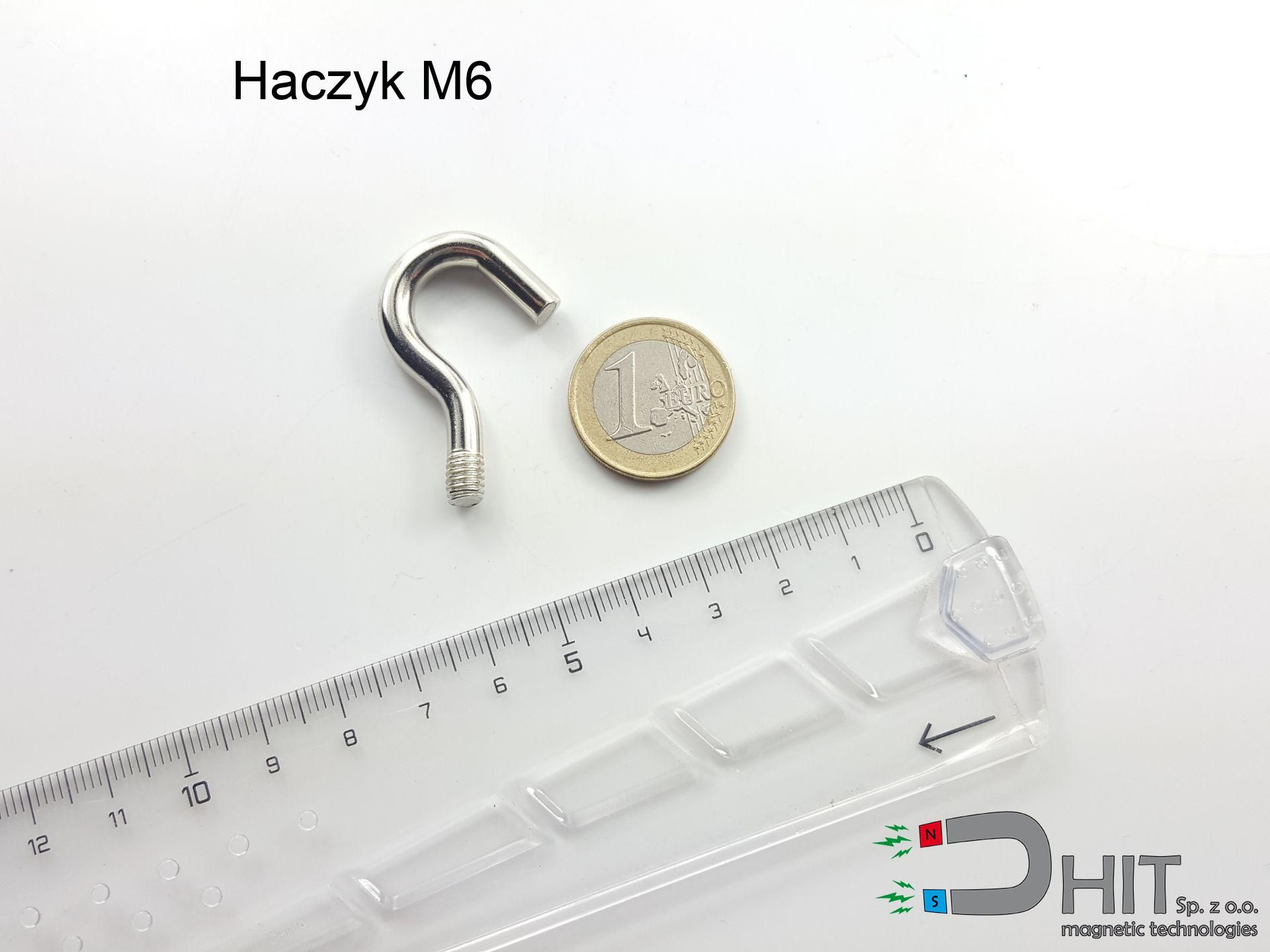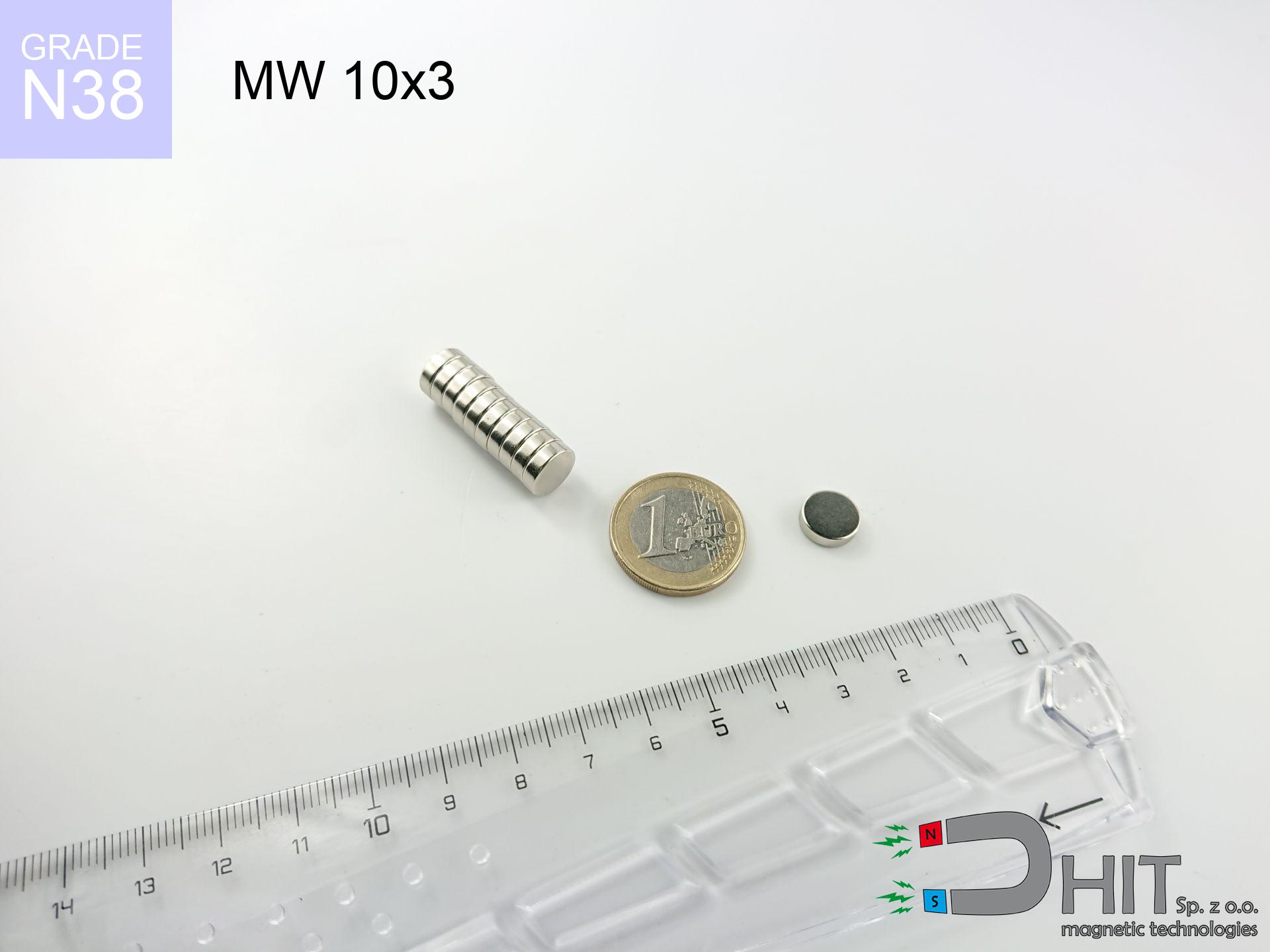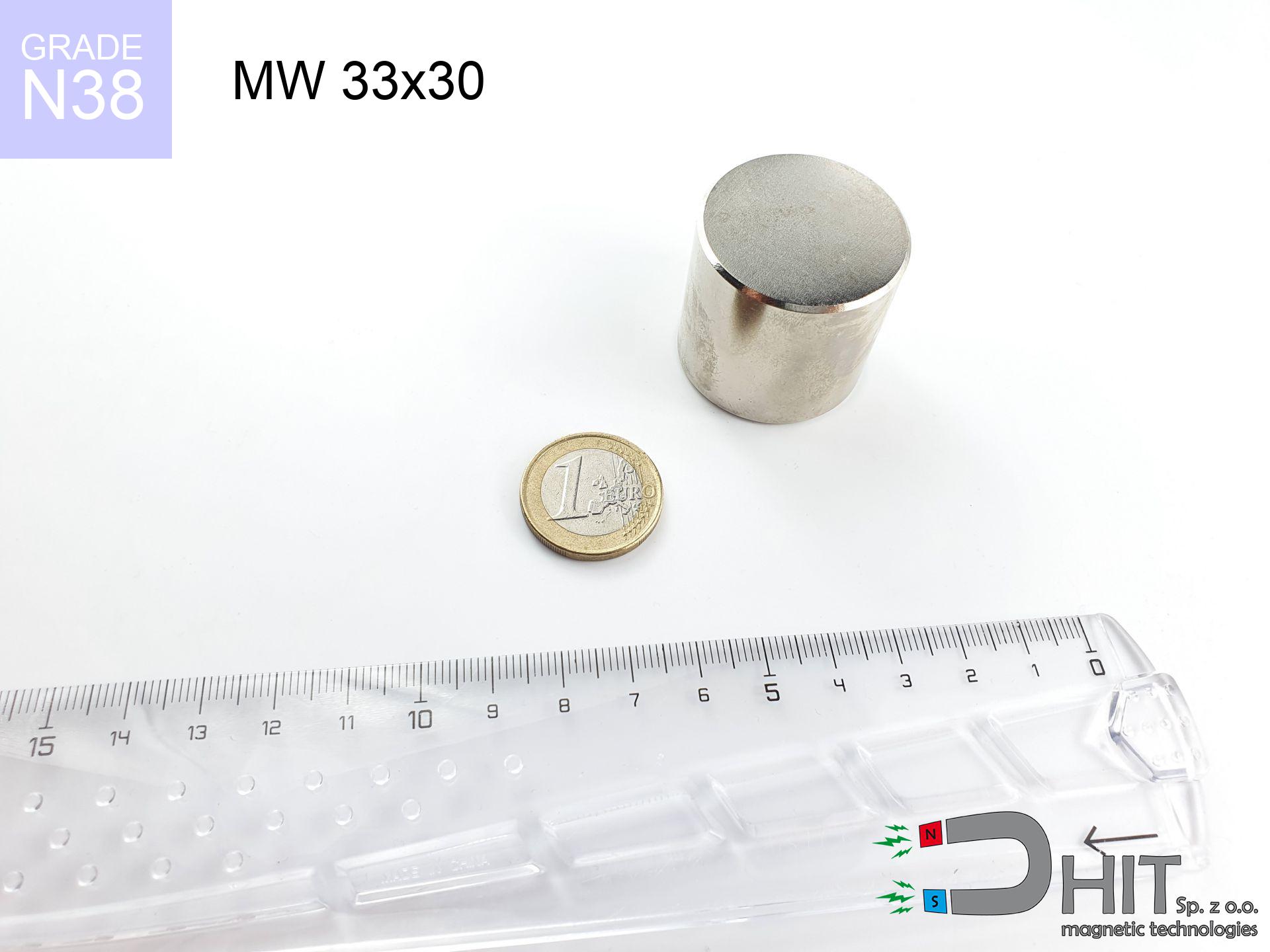AM Haczyk M6 - magnetic accessories
magnetic accessories
Catalog no 080507
Coating
[NiCuNi] nickel
1.230 ZŁ with VAT / pcs + price for transport
1.000 ZŁ net + 23% VAT / pcs
bulk discounts:
Need more?Do you have a dilemma?
Contact us by phone
+48 888 99 98 98
or drop us a message by means of
request form
the contact section.
Force as well as form of a magnet can be reviewed on our
modular calculator.
Order by 14:00 and we’ll ship today!
Magnetic properties of material
Physical properties of sintered neodymium magnets Nd2Fe14B at 20°C
Shopping tips
Advantages and disadvantages of rare earth magnets.
Besides their remarkable strength, neodymium magnets offer the following advantages:
- They have unchanged lifting capacity, and over around 10 years their attraction force decreases symbolically – ~1% (in testing),
- They are noted for resistance to demagnetization induced by external field influence,
- A magnet with a shiny nickel surface has better aesthetics,
- Neodymium magnets ensure maximum magnetic induction on a their surface, which increases force concentration,
- Neodymium magnets are characterized by very high magnetic induction on the magnet surface and can work (depending on the form) even at a temperature of 230°C or more...
- Thanks to the potential of accurate shaping and adaptation to specialized projects, NdFeB magnets can be manufactured in a variety of shapes and sizes, which amplifies use scope,
- Universal use in modern industrial fields – they are used in HDD drives, electric drive systems, precision medical tools, and complex engineering applications.
- Thanks to concentrated force, small magnets offer high operating force, occupying minimum space,
Disadvantages of neodymium magnets:
- They are prone to damage upon too strong impacts. To avoid cracks, it is worth securing magnets in a protective case. Such protection not only protects the magnet but also increases its resistance to damage
- NdFeB magnets demagnetize when exposed to high temperatures. After reaching 80°C, many of them experience permanent drop of power (a factor is the shape as well as dimensions of the magnet). We offer magnets specially adapted to work at temperatures up to 230°C marked [AH], which are extremely resistant to heat
- Due to the susceptibility of magnets to corrosion in a humid environment, we suggest using waterproof magnets made of rubber, plastic or other material immune to moisture, in case of application outdoors
- Limited possibility of creating threads in the magnet and complex shapes - recommended is cover - mounting mechanism.
- Health risk to health – tiny shards of magnets pose a threat, in case of ingestion, which gains importance in the aspect of protecting the youngest. Additionally, tiny parts of these devices are able to complicate diagnosis medical after entering the body.
- Due to expensive raw materials, their price is higher than average,
Maximum magnetic pulling force – what it depends on?
The specified lifting capacity concerns the maximum value, measured under optimal environment, specifically:
- with the use of a yoke made of special test steel, ensuring full magnetic saturation
- with a thickness of at least 10 mm
- characterized by smoothness
- without any insulating layer between the magnet and steel
- under vertical application of breakaway force (90-degree angle)
- at standard ambient temperature
Lifting capacity in real conditions – factors
Please note that the magnet holding will differ depending on elements below, in order of importance:
- Clearance – existence of foreign body (paint, tape, air) interrupts the magnetic circuit, which reduces power steeply (even by 50% at 0.5 mm).
- Force direction – catalog parameter refers to pulling vertically. When applying parallel force, the magnet holds much less (typically approx. 20-30% of maximum force).
- Plate thickness – too thin steel causes magnetic saturation, causing part of the power to be lost to the other side.
- Metal type – different alloys reacts the same. Alloy additives worsen the interaction with the magnet.
- Plate texture – ground elements guarantee perfect abutment, which improves force. Uneven metal reduce efficiency.
- Temperature influence – hot environment weakens pulling force. Exceeding the limit temperature can permanently demagnetize the magnet.
* Lifting capacity was determined using a smooth steel plate of optimal thickness (min. 20 mm), under perpendicular pulling force, however under shearing force the holding force is lower. Additionally, even a small distance {between} the magnet’s surface and the plate reduces the holding force.
Safety rules for work with NdFeB magnets
Do not overheat magnets
Keep cool. NdFeB magnets are susceptible to temperature. If you require operation above 80°C, ask us about special high-temperature series (H, SH, UH).
Avoid contact if allergic
Studies show that the nickel plating (the usual finish) is a potent allergen. If your skin reacts to metals, avoid touching magnets with bare hands or select versions in plastic housing.
Product not for children
Absolutely store magnets out of reach of children. Choking hazard is significant, and the effects of magnets connecting inside the body are life-threatening.
Implant safety
Warning for patients: Strong magnetic fields affect electronics. Keep at least 30 cm distance or request help to handle the magnets.
Flammability
Dust generated during grinding of magnets is combustible. Avoid drilling into magnets without proper cooling and knowledge.
Impact on smartphones
GPS units and smartphones are highly susceptible to magnetism. Direct contact with a powerful NdFeB magnet can permanently damage the sensors in your phone.
Keep away from computers
Do not bring magnets close to a purse, computer, or screen. The magnetism can irreversibly ruin these devices and wipe information from cards.
Finger safety
Big blocks can smash fingers instantly. Under no circumstances place your hand betwixt two attracting surfaces.
Caution required
Handle with care. Neodymium magnets act from a long distance and connect with huge force, often quicker than you can react.
Fragile material
Watch out for shards. Magnets can explode upon uncontrolled impact, launching shards into the air. Eye protection is mandatory.
Danger!
Want to know more? Read our article: Are neodymium magnets dangerous?



![SM 32x350 [2xM8] / N42 - magnetic separator SM 32x350 [2xM8] / N42 - magnetic separator](https://cdn3.dhit.pl/graphics/products/sm-32x350-2xm8-nih.jpg)


![BM 750x180x70 [4x M8] - magnetic beam BM 750x180x70 [4x M8] - magnetic beam](https://cdn3.dhit.pl/graphics/products/bm-750x180x70-4x-m8-zif.jpg)

